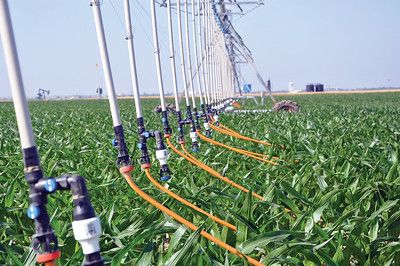5 Acid Rain Solutions Explained
Acid rain solutions are; energy transition, afforestation, technological innovation, circular economy, and sustainable agriculture.
This article discusses acid rain solutions, as follows;
1). Energy Transition (as one of the Acid Rain Solutions)
Consumption of energy from carbonaceous fossil fuels contributes to acid rain formation [5].
This is because the combustion of fossil fuels is one of the most prominent causes of acid rain, by producing large volumes of anhydrous gases that are emitted into the atmosphere to react with, and acidify precipitation.
Generally, fossil fuels are an unsustainable energy source with major environmental impacts like greenhouse emission, air quality reduction, climate change, oil spill and other forms of degradation.
The energy transition is a concept that refers to efforts being made to achieve sustainability by replacing fossil fuels and other unsustainable energy options, with sustainable ones.
A transition from conventional energy sources and technologies to renewable energy systems like solar and wind; will reduce atmospheric emission of anhydrous gases, and therefore mitigate acid rain.
Energy transition is one of the most effective acid rain solutions because it addresses the root cause of the problem; and is capable of solving the problem of acid rain from the point of gas emission or rain formation.
Also, the effectiveness of energy transition for solving acid rain problems can be optimized by implementing supportive regulations, industrial practices and energy technologies.
Examples of supportive industrial practices for acid rain resolution include energy conservation, emission-volume restriction, and energy recovery.
2). Afforestation
Deforestation is both a cause and an effect of acid rain.
This implies that a reversal of deforestation through afforestation, can serve as a partial solution to acid rain and its effects.
Forests improve air quality by intercepting or absorbing toxins and greenhouse gases.
As a carbon sink, forest vegetation takes up and utilizes atmospheric carbon for photosynthesis, thereby enhancing the rate of carbon sequestration in soil [4].
Forest vegetation may also absorb other anhydrous gases like sulfur dioxide (SO2), reducing the concentration of such gases in the atmosphere.
Other air pollutants that may contribute to the formation of acid rain, can be intercepted by trees and removed from the atmosphere.
Large-scale afforestation can mitigate not only acid rain, but also some of its potential effects like soil degradation and desertification.
In order for it to be effective as an acid rain solution, afforestation must be supported by other solutions such as energy transition. This ensures that trees which are planted are not merely destroyed by acid rain, but rather help to reduce the atmospheric concentration of gases that react with water to form acid rain.

3). Technological Innovation (as one of the Acid Rain Solutions)
Innovative technological solutions can be used to address the problem of acid rain.
These solutions may be implemented at any stage in the process of acid rain formation; from the point of energy production to gas emission.
For example, sustainable designs and mechanisms may be introduced into the mining and exploration sector, so that machinery used for energy production may be optimized to reduce all byproducts that can facilitate acid rain formation.
Technological innovation in the power sector may also be applied, to yield modified power plants, electric generators, smart grids, and energy management systems.
The transport sector may be optimized to reduce the risk of acid rain by increasing the production of efficient internal combustion engines and electric cars.
Another area where innovation may apply for mitigating acid rain is the area of transition to sustainable energy.
Improving the efficiency and performance of wind turbines, solar panels, wave power converters and other renewable technologies will reduce dependence on fossil fuels, and hence reduce the rate of emission of acid anhydrides into the atmosphere.
Atmospheric removal of such gases that cause acid rain, can also be achieved using innovative carbon removal technologies like direct air capture [3] and geo-engineering carbon capture techniques like ocean fertilization.
4). Circular Economy
Circular economic practices can help mitigate acid rain because they reduce wastage of energy resources, pollution, and other factors that contribute to acid rain formation.
Resource depletion and the release of waste energy into the environment is associated with acidification of ecosystems [1], because toxins are emitted in the form of waste, as energy and material resources are lost.
When circular economy is established, practices like recycling are used to boost the energy efficiency of production, and reduce waste production.
Circular economy also supports other solutions to acid rain like energy transition and technological innovation. Renewable energy, efficient consumption, and sustainable production using technologies like artificial intelligence, are all encouraged by the circular economic model.
Environmental protection measures like carbon trading are also incorporated into circular economic schemes to control emissions from the industrial sector, which can cause acid rain.
5). Sustainable Agriculture (as one of the Acid Rain Solutions)
Unsustainable agriculture is one of the causes of acid rain.
Gaseous anhydrides like nitrous oxide (NO2) are emitted in large volumes from farms each year, as a result of the use of chemicals like fertilizers and pesticides [2].
Sustainable agricultural practices and principles such as composting and organic farming, mitigate the risk of acid rain by reducing the rate at which chemicals are used and emissions are released.

Conclusion
Acid rain solutions are;
1. Energy Transition
2. Afforestation
3. Technological Innovation
4. Circular Economy
5. Sustainable Agriculture
References
1). Al-Rumaihi, A.; Mckay, G.; Mackey, H. R.; Al-Ansari, T. (2020). “Environmental Impact Assessment of Food Waste Management Using Two Composting Techniques.” Sustainability 12(4):1595. Available at: https://doi.org/10.3390/su12041595. (Accessed 13 November 2022).
2). Bhattarai, H. R. (2018). “Emissions of atmospherically important nitrous acid (HONO) gas from northern grassland soil increases in the presence of nitrite (NO2−) “ Agriculture Ecosystems & Environment 256:194-199. Available at: https://doi.org/10.1016/j.agee.2018.01.017. (Accessed 13 November 2022).
3). Sanz-Pérez E. S.; Murdock C. R.; Didas S. A.; Jones C. W. (2016). “Direct Capture of CO2 from Ambient Air.“ Chem Rev. 2016 Oct 12;116(19):11840-11876. Available at: https://doi.org/10.1021/acs.chemrev.6b00173. (Accessed 13 November 2022).
4). Sedjo, R.; Sohngen, B. (2012). “Carbon Sequestration in Forests and Soils.” Annual Review of Resource Economics 4(1):127-144. Available at: https://doi.org/10.1146/annurev-resource-083110-115941. (Accessed 13 November 2022).
5). Streets, D. G.; Carmichael, G. R.; Amann, M.; Arndt, R. L. (1999). “Energy consumption and acid deposition in Northeast Asia.” AMBIO 28 (2) 135-143. Available at: http://www.jstor.org/stable/4314864. (Accessed 13 November 2022).




